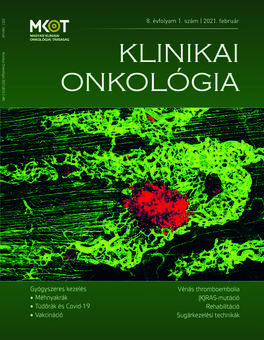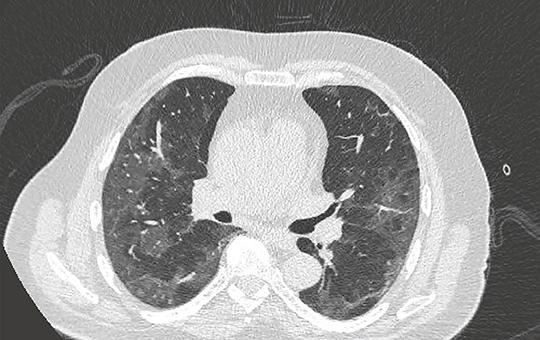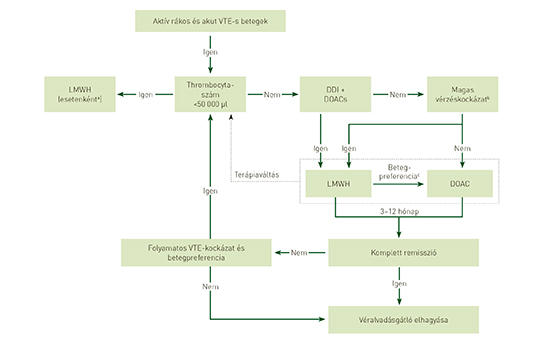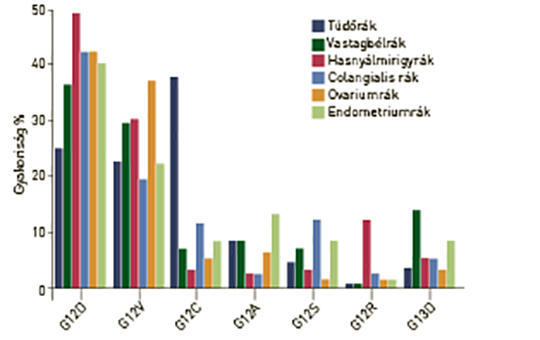The eLitMed.hu medical portal uses computer cookies for convenient operation. Detailed information can be found in the Cookie-policy.
Clinical Oncology - 2021;8(1)
Content
[Comprehensive care of the carcinoma of the uterine cervix]
[Cancer of the uterine cervix is a major world health problem for women. Yearly around half a million new cases are diagnosed with cervical cancer having leaded nearly 300,000 deaths in 2018 globally. In developed countries epidemiological data is improving due to the vaccination policy against “high risk” human papilloma viruses (hrHPV) and the population-based screening programs by cytology or hrHPV-testing. However, in developing regions the incidence and mortality data are still dismal. Precancerous lesions and early-stage cervical cancer can be cured solely by surgical approach. Pathological risk factors will determine the need of postoperative radio- or chemoradiotherapy. In advanced-stage disease chemoradiotherapy or systemic therapy are the available options. As a considerable part of the patients are young female, there are some special issues to be faced with like the desire of fertility-sparing or cervical cancer diagnosed in pregnancy. Clinically occult cervical carcinoma recognized after simple hysterectomy is another complex therapeutic field. In modern oncology, the biological agents have also emerged in the therapeutic field of advanced cases: bevacizumab combined with cisplatin and paclitaxel as first line therapy; and pembrolizumab as second line option for tumors with microsatellite instability-high (MSI-H)/mismatch repair deficiency (dMMR) or for tumors express PD-L1 (Combined Positive Score [CPS] ≥1.) The present work provides a short summary of the current literature about the screening, staging, comprehensive management and follow-up of uterine cervical cancer.]
[SARS-CoV-2 infection-lung demage. Lung cancer and Covid-19 in the TERAVOLT clinical studys]
[Hopefully, towards the end of the Covid-19 pandemic, we intend to provide a brief overview of the infection, the pathogen, most effective treatment options, lung damage, and the results of TERAVOLT clinical trial, about patients with lung cancer, treated or not-treated, infected by SARS-CoV-2 virus. Tried to summarize the new diagnostic and therapy rules (bronchoscopy, chest x-ray, chest CT), and the potential new vaccinations. Authors provide a brief overview of the treatment of respiratory and cancer patients during infection, the continuation of inhalation drugs, immunotherapy and/or chemotherapy.]
[The benefits of vaccination in risk groups]
[As the average age increases, the prevention of infectious diseases is of paramount importance, not just during a pandemic. In terms of volume and complications, pneumococcal and influenza infections are among the top 10 most common causes of death. Timely and properly applied vaccination is an effective weapon against both diseases. This fact is confirmed by several clinical trials. The advent of conjugate vaccination has been a milestone in the history of vaccination. It is important that affected groups are protected from the two seasonal infectious diseases as soon as possible. Always use the conjugate vaccine first to develop protection against pneumococcus, the polysaccharide vaccination, which only broadens the spectrum, is proposed in the second step and needs to be considered for at-risk groups. Influenza vaccination should be repeated annually. The two vaccines can be given at the same time, there is no need to keep the interval.]
[Treatment of cancer associated venous thromboembolism in the age of direct oral anticoagulants]
[Anticoagulation for cancer-associated venous thromboembolism (VTE) can be challenging due to complications-including bleeding and potential drug-drug interactions with chemotherapy-associated with vitamin K antagonists and inconvenience of low-molecular-weight heparin (LMWH). Direct oral anticoagulants (DOACs) could partially overcome these issues, but until recently there were no large clinical trials assessing their efficacy and safety in cancer patients. This review summarizes clinical treatment guidelines, prior clinical and real-world evidence for anticoagulant choice, recent clinical trials assessing DOACs for cancer-associated VTE (i.e. Hokusai-VTE Cancer, SELECT-D, CARAVAGGIO, and ADAM VTE), and special considerations for DOAC use. Based on established data, clinical guidelines recommend patients with cancer-associated VTE receive LMWH treatment of at least 3-6 months. Nevertheless, LMWH is underused and associated with poor compliance and persistence in these patients relative to oral anticoagulants. Clinical data supporting DOAC use in cancer patients are becoming available. In Hokusai-VTE Cancer, edoxaban was noninferior to dalteparin for the composite of recurrent VTE and major bleeding (12.8% versus 13.5%), with numerically lower recurrent VTE (7.9% versus 11.3%) and significantly higher major bleeding (6.9% versus 4.0%); only patients with gastrointestinal cancer had significantly higher risk of bleeding with edoxaban. In SELECT-D, rivaroxaban had numerically lower VTE recurrence (4% versus 11%), comparable major bleeding (6% versus 4%), and numerically higher clinically relevant nonmajor bleeding (13% versus 4%) versus dalteparin. Most bleeding events were gastrointestinal or urologic; patients with esophageal/gastroesophageal cancer had higher rates of major bleeding with rivaroxaban (36% versus 11%). For comparison of apixaban versus dalteparin, CARAVAGGIO is ongoing, and preliminary results from ADAM VTE are favorable. This review concludes that DOACs appear to be reasonable alternatives to LMWH for treatment of cancer-associated VTE. In patients with gastrointestinal cancer, DOAC use should be considered on a case-by-case basis with consideration of the relative risks and benefits. Kulcsszavak: venous thromboembolism, cancer, treatment, direct oral anticoagulants Nevertheless, LMWH is underused and associated with poor compliance and persistence in these patients relative to oral anticoagulants. Clinical data supporting DOAC use in cancer patients are becoming available. In Hokusai-VTE Cancer, edoxaban was noninferior to dalteparin for the composite of recurrent VTE and major bleeding (12.8% versus 13.5%), with numerically lower recurrent VTE (7.9% versus 11.3%) and significantly higher major bleeding (6.9% versus 4.0%); only patients with gastrointestinal cancer had significantly higher risk of bleeding with edoxaban. In SELECT-D, rivaroxaban had numerically lower VTE recurrence (4% versus 11%), comparable major bleeding (6% versus 4%), and numerically higher clinically relevant nonmajor bleeding (13% versus 4%) versus dalteparin. Most bleeding events were gastrointestinal or urologic; patients with esophageal/gastroesophageal cancer had higher rates of major bleeding with rivaroxaban (36% versus 11%). For comparison of apixaban versus dalteparin, CARAVAGGIO is ongoing, and preliminary results from ADAM VTE are favorable. This review concludes that DOACs appear to be reasonable alternatives to LMWH for treatment of cancer-associated VTE. In patients with gastrointestinal cancer, DOAC use should be considered on a case-by-case basis with consideration of the relative risks and benefits.]
[(K)RAS mutant human cancers]
[RAS mutation is the most frequent oncogenic alteration in human cancers and K-RAS is far the most frequently involved among the RAS family members followed by N-RAS. Beside the emblematic K-RAS mutant cancers, pancreatic-, colorectal- and lung adenocarcinomas, urogenital cancers are also belong to this family of malignancies. It is important that K-RAS mutation frequencies are relatively stable around the world in various cancer types with one exeption: lung adenocarcinoma. The variant allele frequencies of K-RAS seems to be cancer-type specific reflecting various carcinogenic processes. Beside point mutation K-RAS allelic imbalances are also frequent in human cancers leading to the predominance of the mutant allele. K-RAS mutant cancers are characterized by typical cancer-type specific co-occurring mutations and well-defined gene expression signatures. ]
[Rehabilitation of cancer patients]
[In our country, the number of neoplastic diseases is constantly increasing. Based on the KSH data 376,709 people had neoplastic diseases in 2017. The disease is a long-term, chronic process, and the physical burden caused by treatments makes it difficult to maintain the physical and mental balance of patients. The quality of life of the neoplastic diseases patient changes, his ability to work will be reduced, his role in the family will be changed, his physical and emotional strength. These problems can be remedied by rehabilitation interventions, but oncology rehabilitation in many places in Hungary is unfortunately not part of the standard of care. In fact, oncology rehabilitation differs from the rehabilitation plan for other diseases. The oncology rehabilitation plan should be treated more flexible and more differentiated, changes due to disease and treatment should always be considered. As a result, the demand for evidence-based rehabilitation interventions is growing therefore, our aim is to apply international literature overview of rehabilitation options for neoplastic diseases patients, including metastatic patients which can be used to reduce pain as a side effect of treatments, musculoskeletal and nutritional problems this will allow for a significant improvement in the quality of life of patients.]
[Promising Radiotherapy techniques at the beginning of clinical implementation: microbeam- and FLASH therapy]
[Recent technical developments have enabled to implement ideas raised a few decades earlier. Extensive radiobiology experiments have demonstrated the potential clinical benefit from novel irradiation techniques with ultra high spatial and temporal resolution. A large number of preclinical studies have proven that instead of using homogeneous irradiation fields, arrays of tenths of millimeter beams spaced some hundred micrometer (microbeam radiotherapy – MRT) result in a significant increase in the therapeutical index. The similar radiobiological advantage could be achieved with high dose (>10 Gy) delivery, with extreme high dose rate (≥106 Gy/s), within maximal 500 ms (flash radiotherapy), promising better normal tissue protection but similar tumour treatment efficacy compared to conventional, continuous dose delivery over minutes. A century back the first type of spatial fractionation (SFRT) at cm level the GRID therapy was proposed, which was developed to a 3-dimensional format to the LATTICE irradiation providing significant clinical experiences. The highly promising renascent of SFRT at µm level (MRT) is just prior to clinical investigation. Meanwhile one year after a case of human flash irradiation, the first clinical trial launched in the USA in October 2020. In this review, we summarize the basics of the two emerging radiation modalities, MRT and flash irradiation, technical conditions, possible mechanisms of action, preclinical results to date, and potential clinical applications.]
1.
Clinical Neuroscience
Is there any difference in mortality rates of atrial fibrillation detected before or after ischemic stroke?2.
Clinical Neuroscience
Factors influencing the level of stigma in Parkinson’s disease in western Turkey3.
Clinical Neuroscience
Neuropathic pain and mood disorders in earthquake survivors with peripheral nerve injuries4.
Journal of Nursing Theory and Practice
[Correlations of Sarcopenia, Frailty, Falls and Social Isolation – A Literature Review in the Light of Swedish Statistics]5.
Clinical Neuroscience
[Comparison of pain intensity measurements among patients with low-back pain]1.
Clinical Neuroscience Proceedings
[A Magyar Stroke Társaság XVIII. Kongresszusa és a Magyar Neuroszonológiai Társaság XV. Konferenciája. Absztraktfüzet]2.
3.
Journal of Nursing Theory and Practice
[A selection of the entries submitted to the literary contest "Honorable mission: the joys and challenges of our profession" ]4.
Journal of Nursing Theory and Practice
[End of Life and Palliative Care of Newborns in the Nursing Context]5.
Journal of Nursing Theory and Practice
[Aspects of Occupational Health Nursing for Incurable Patients ]







